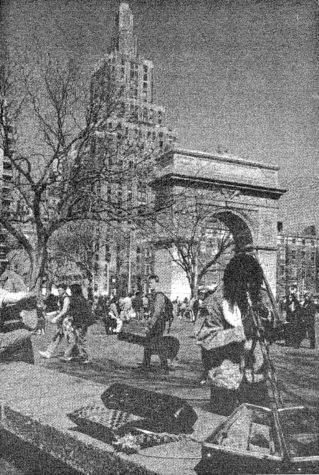
Twenty-five years ago, it was 1993. Bill Clinton was president of the United States, blockbuster “Jurassic Park” had just been released and most importantly, people still thought patchwork pullovers were acceptable to wear in public.
Pouring through WSN’s archives, we found that history does in fact repeat itself. Protests, unions, politics, tragedies — there are almost eerie similarities between NYU then and NYU now. That’s not to say this university hasn’t changed. It certainly has. But some traditions live on while some problems remain unresolved; and no, the subway wasn’t working then either.
Here is a look at NYU in 1993.
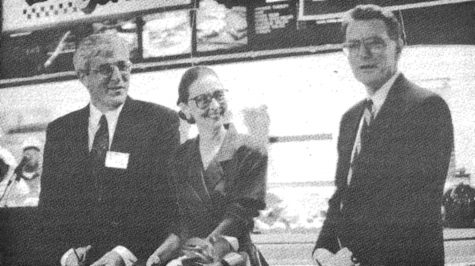
Dining Halls
Before the days of Michelle Obama’s healthy-school lunch program and the Kimmel pasta bar’s green Mediterranean facelift, the university and its food provider, ARA — now known as Aramark — rolled out Burger King and Taco Bell Express stands. The two fast-food chains were the newest additions to the food court located in the basement of the Loeb Student Center, which has since been demolished and replaced with the Kimmel Center for University Life. Students’ main complaints included the university’s prioritization of corporations over student’s health and diets. Debate over NYU’s food services continues to this today with discussion focusing around Aramark’s controversial tenure, which is slated for review at the end of 2018. Students — much like those in 1993 — want the university to take note of their complaints, whether they be on the quality of the food or the quality of the company that provides it.
Tragedy Shakes the University
In 1993, two students died, on separate occasions, jumping from their respective dorm windows in Hayden Residence Hall, now known as Lipton Residence Hall. The first, CAS sophomore Marc Kim Yen Johnson, 20, passed away on Sept. 11, after a passerby found him on the sidewalk. Johnson was only in the second week of his sophomore year. Through interviews with WSN, friends painted a picture of a young man on the path to success — working hard in his classes and always a pleasant face on campus. The Monday following Johnson’s death, students, friends, family and faculty gathered in Hayden’s dining hall in his memory.

“I just want all students to know that, if they need anything whatsoever, please, please come to me,” Hayden’s building manager said at the memorial.
The Director of University Counseling Services wrote an op-ed headlined “Don’t overlook the warning signs of suicidal behavior,” in which he asked those contemplating suicide and those surrounding them to be open to asking for help.
Two months later, on Nov. 22, CAS first-year Eiji Kaneko also jumped to his death. An international student from Japan, Kaneko left a note in his room outlining troubles with his grades and family situation. On the day of Kaneko’s death, a mandatory meeting was called between residents, resident assistants and the Hayden managerial staff to discuss the situations and their respective feelings. Many students brought up their own loneliness and criticized the coldness of the school.
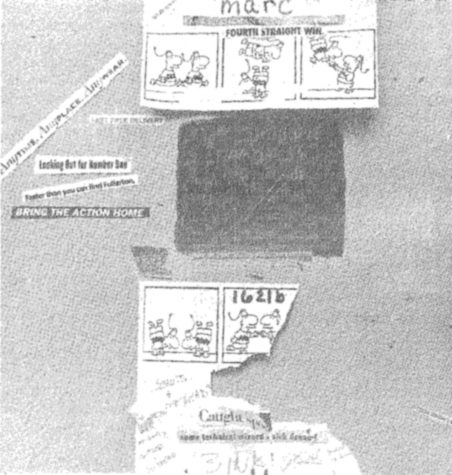
Over the past year, three members of the NYU community have also taken their own lives. The most recent involved an 18-year-old first-year who was struck by an oncoming L Train at the First Avenue Station. Many students told WSN that they were unhappy with how the university handled his death, deciding not to publicly acknowledge it. Other concerns arose over NYU’s Student Health Center and the availability and effectiveness of its resources. A similar debate followed the two suicides in 1993. Many claimed the center was understaffed, which was remedied with more hires following Johnson’s death. Students were capped to 12 counseling sessions per academic year, but no more than 20 over their academic career, provided by a university-affiliated counselor before being directed to an outside provider.
Now, the Wellness Exchange bears a similar cap of only 10 sessions per academic school year. With students harboring similar concerns to those of 25 years ago, the aim of providing well-received mental health resources seems to be an ongoing battle for the university.
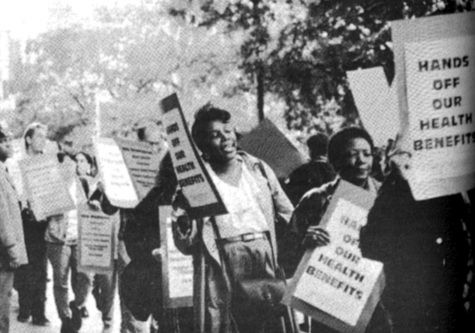
Faculty Demanded More
It felt like people circled Bobst Library with picket signs and pamphlets almost every week last semester, primarily NYU’s 1,400-person faculty union, demanding better pay and benefits from the university as its contract came up for negotiation. Flash back 25 years and it’s like looking in a mirror. The exact same union, Local 3882, with 100 more members, picketed and protested outside of Bobst with almost identical demands for its new contract.
“NYU has always been incredibly hostile at the negotiating table, and we are trying to send them a message,” said the 1993 union’s staff organizer, mimicking complaints made by union leaders earlier this year.
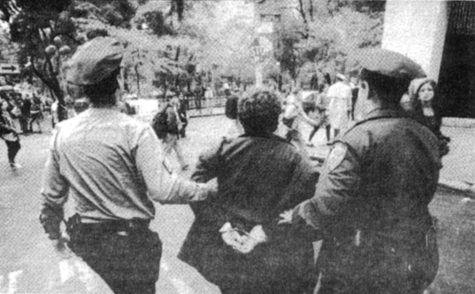
But however fierce the talks this year became, 1993 was a different ballgame — union members disrupted a health fair in Kimmel and three protestors were arrested during a union march, leading to accusations of sexism and racism against the university and police. Despite differences in intensity, the efforts from then and now were both successful, ratifying favorable contracts with wage and benefit improvements.
City
The political battle to watch this semester was between incumbent Governor Andrew Cuomo and now defeated underdog Cynthia Nixon. The campaign of the former “Sex and the City” actress sparked debate around campus — many unsure of whether to side with Nixon due to overlapping liberal ideologies or question the place of another celebrity-turned-politician in government. NYU’s identity within New York City has always tied the university’s students to city politics. In 1993, the center of attention was the tight face-off between Republican nominee Rudy Giuliani and incumbent Democratic mayor David Dinkins. Giuliani’s narrow win was a watershed moment in New York City politics, as he was the first Republican mayor in 28 years, dividing a left-leaning student population over his more conservative policies.
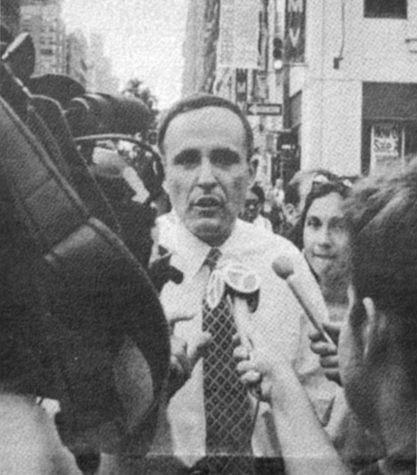
Then, there’s the subway. There’s always the subway. These past few months have been testy for the MTA, with falling ceilings, flooding stations and the imminent shutdown of the L Train making commutes more frustrating and less predictable by the day. Though not as extreme, 1993 wasn’t exactly a pristine year for the New York City subway system either. Hope came in the form of improvements to the West Fourth Street subway station. But many questioned the effectiveness of these changes, along with the greater $18 billion worth of renovations made by the MTA in the three years leading up to 1993. These changes included improvements and upkeep for 50 stations, the rebuilding of 712 miles of track and $2 billion spent on new cars. But NYU students noted work still needed to be done.
“Despite these advances, the MTA still could do much to improve the subway,” said one student at the time. If only they could see it today.
This is not to say that the university and the city haven’t progressed since 1993. After all, we do have air conditioning in most of the dorms now. However, there is something to be said about the ongoing concerns and recurring events at NYU. Students, faculty and administrators are still fighting many of the same fights. In that light, here’s to hoping that 25 years from now, there’s a little less deja vu.
A version of this article appeared in the Monday, Oct. 22 print edition. Email Pamela Jew and Jemima McEvoy at [email protected].

























































































































































